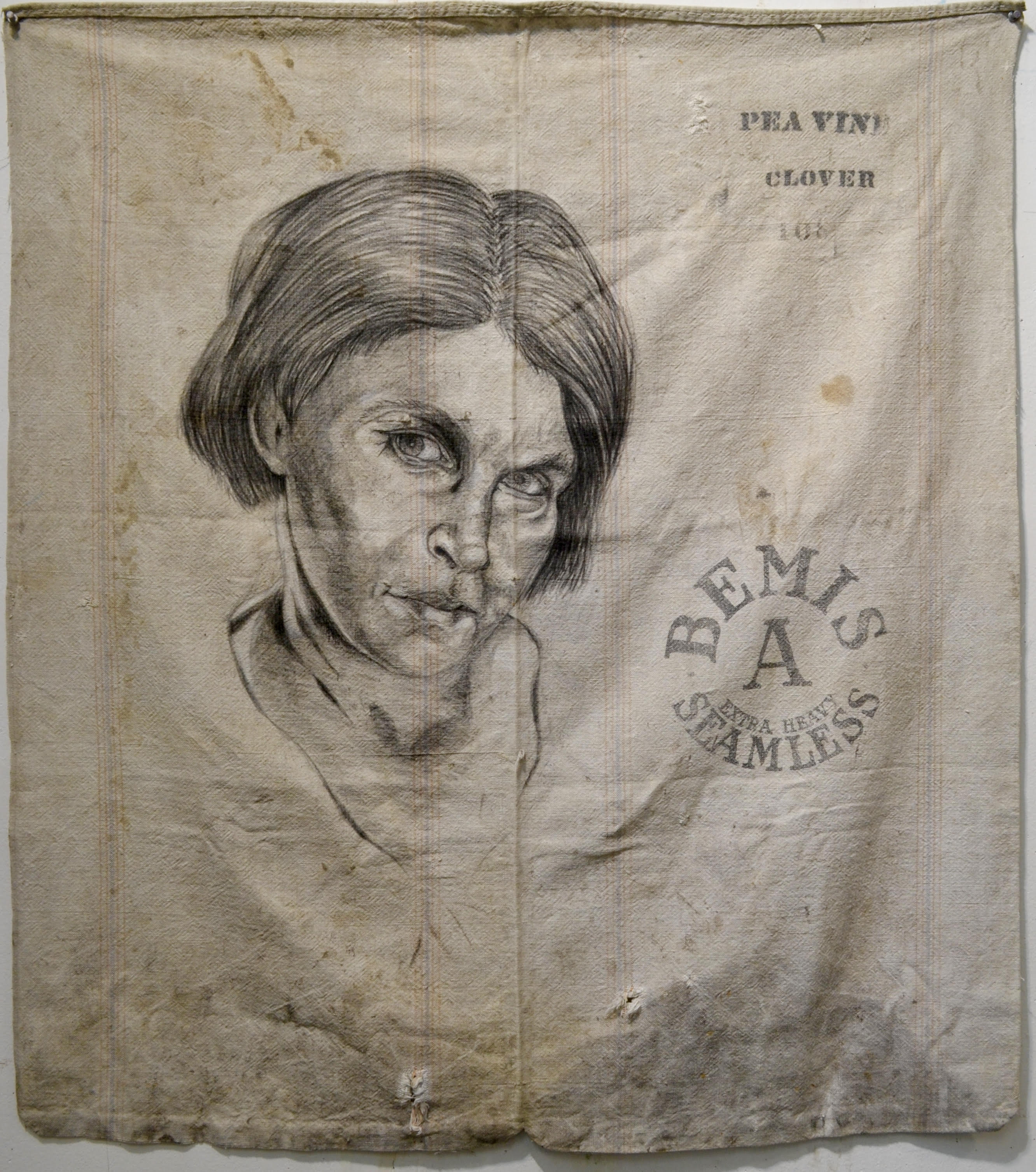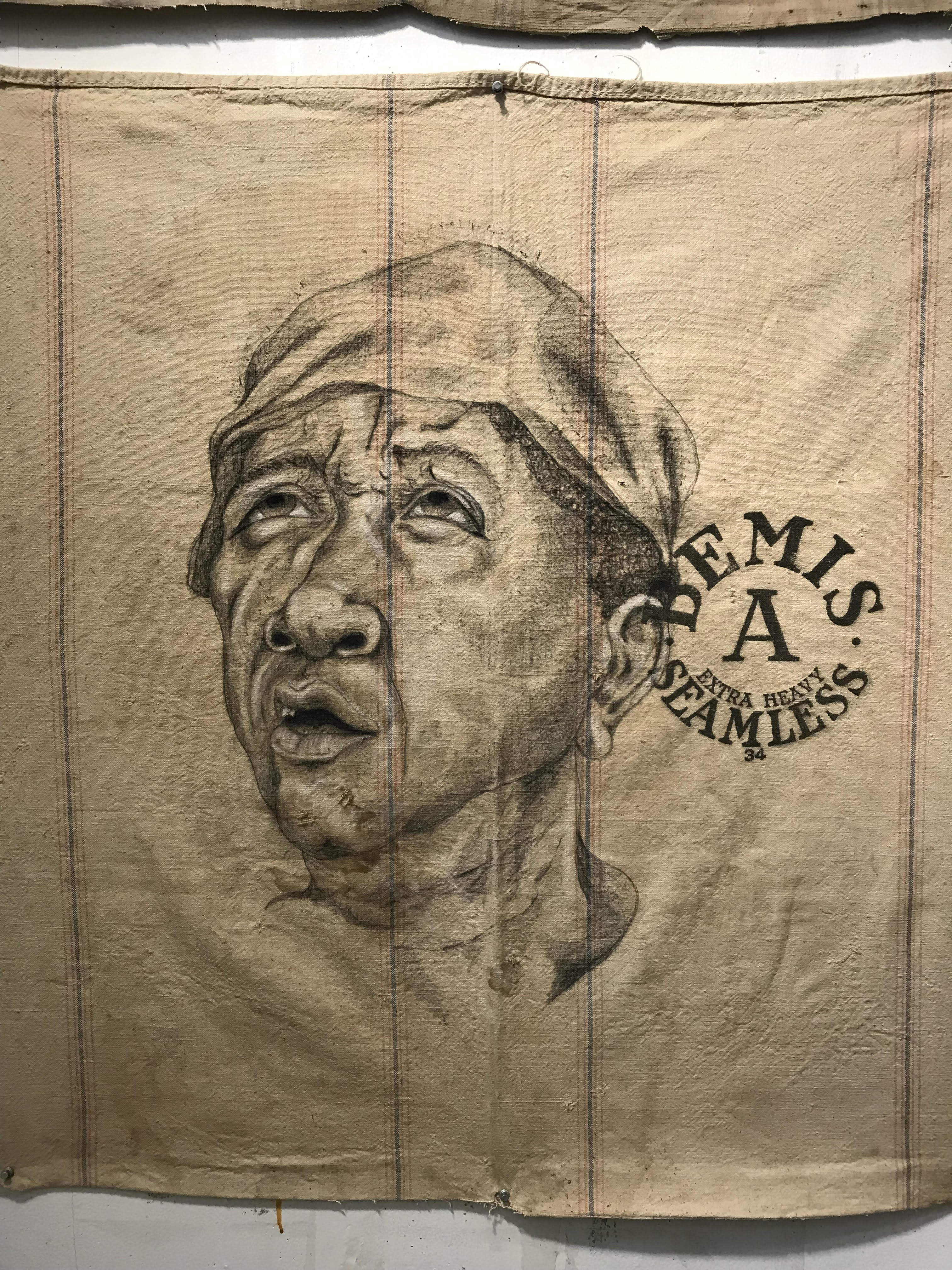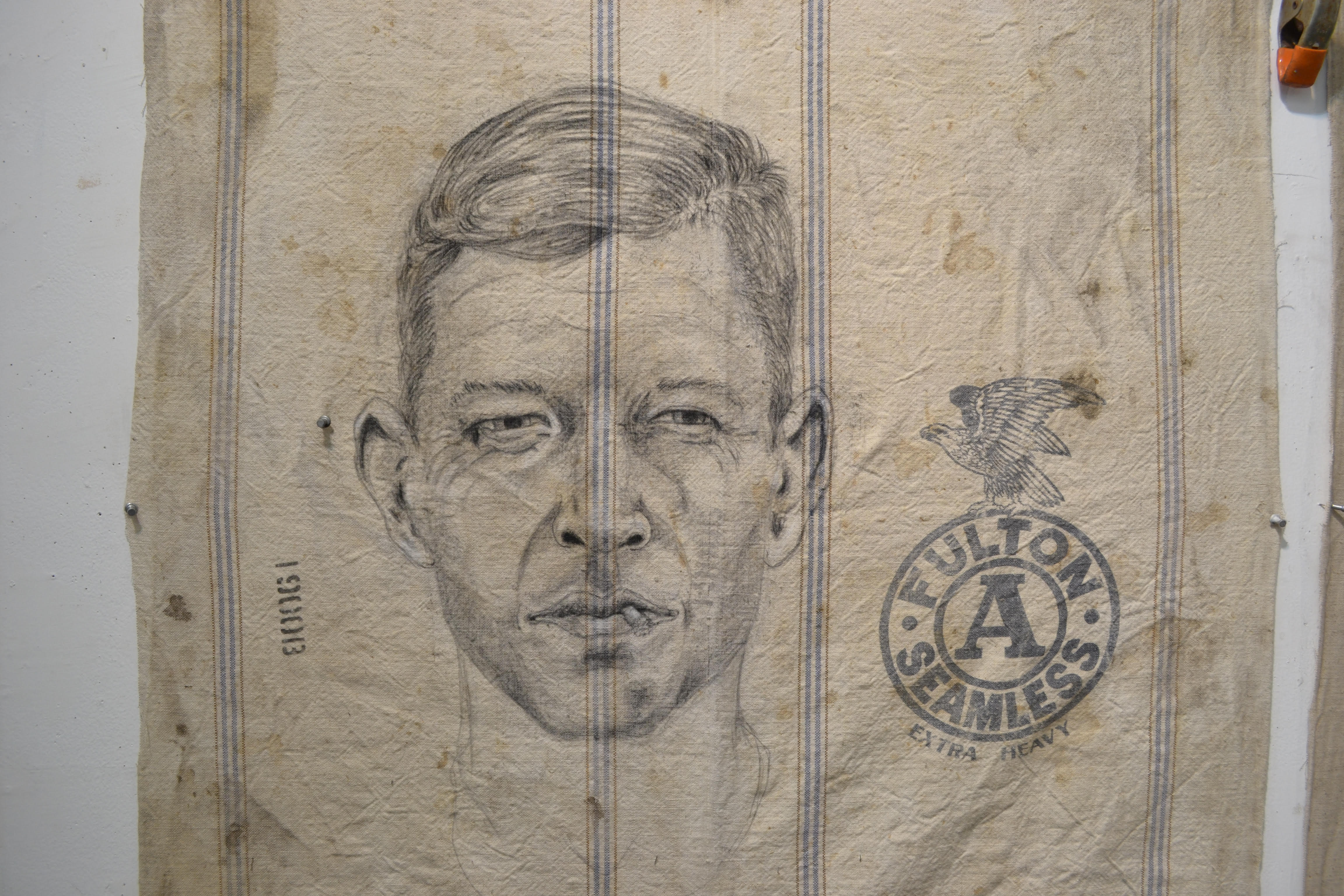the content of our character
2019
Commissioned by Southern Foodways Alliance, Oxford, Mississippi
Underwritten by 21c Museum Hotels
Alice Gray Stites Chief Curator and Director
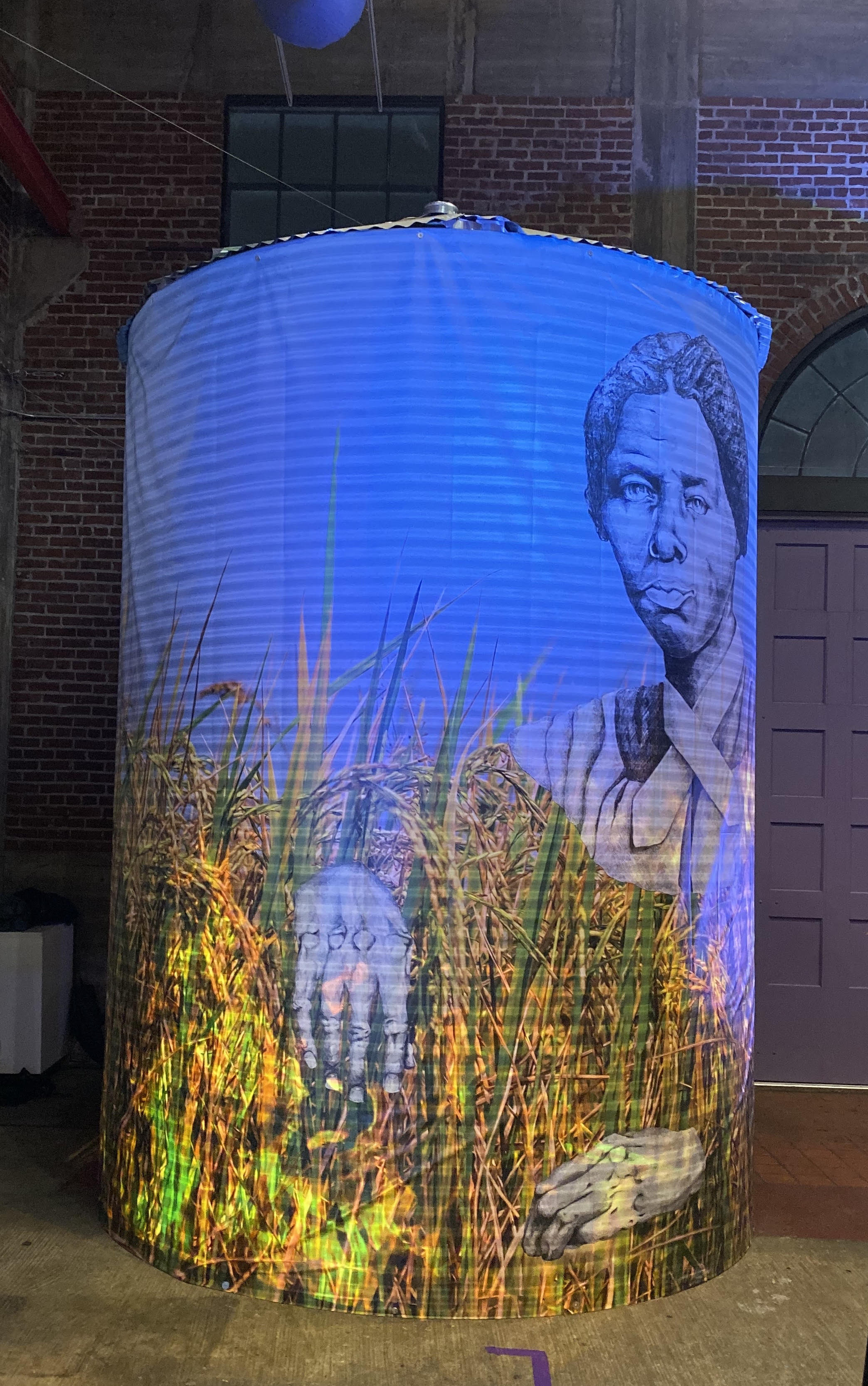
168" x 108"
Billboard vinyl, Tin, Wood, Video projection
On June 2, 1863, Harriet Tubman, working in concert with Union Colonel James Montgomery and the African American 2nd South Carolina regiment, led what has come to be called the Combahee Ferry Raid. Traveling up the Combahee River in what are now the South Carolina counties of Beaufort and Colleton, they burned railroad bridges, plantations, and rice fields, and freed more than 700 enslaved people. This installation speaks to that moment, to the ways that food can be a tool of war and a spoil of war, and to the long history of food labor in the region.
The sculpture is a fabricated 14 foot tall grain silo, vinyl-wrapped with the image of a rice field burned during the raid, superimposed with the image of a drawing of Tubman. Video footage of flames projects onto the silo to render the burning crops.
I was inspired by the valor and righteousness of Harriet Tubman and the raiders, this work speaks to the reach and impact of Tubman’s daring. My aim is to create a dialogue between the viewer and the art, using historical reference points. Some might see “the content of our character,” whose title is adapted from one of the best-known lines in Martin Luther King Jr.’s 1963 “I Have a Dream” speech, as a work of cultural appropriation. I respect that critique. What I’m saying is that this is a story everyone should know. I was brought up in the South by parents who were involved in the Civil Rights Movement and in the peace protests of the Vietnam War era. They were engaged and aware. But I didn’t learn this story until more recently. My upbringing shaped me, influencing the things I want to make. This is one of the stories I want to tell about the South.
On the opposite wall, arranged like a jury of peers, hang feed sacks painted with the faces of Depression-era black and white sharecroppers. Inspired by photographs taken in 1930s Mississippi by documentarians like Margaret Bourke White and Dorothea Lange, their portraits underscore the anonymous and interdependent labor class on which the agricultural economy of the South has long depended.
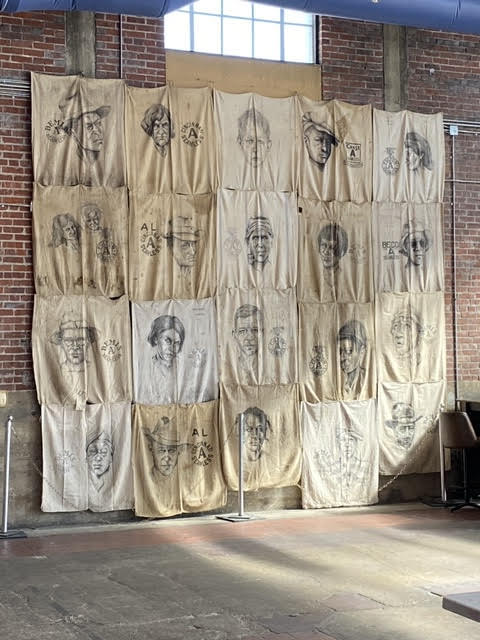
the content of our character part II
Graphite, Charcoal on Vintage Seed Sacks
20 elements
168" x 180" overall
